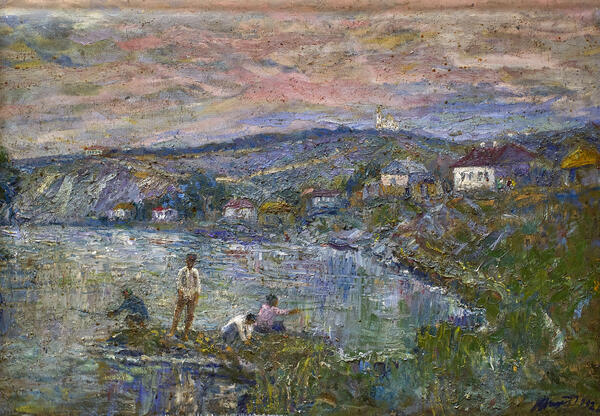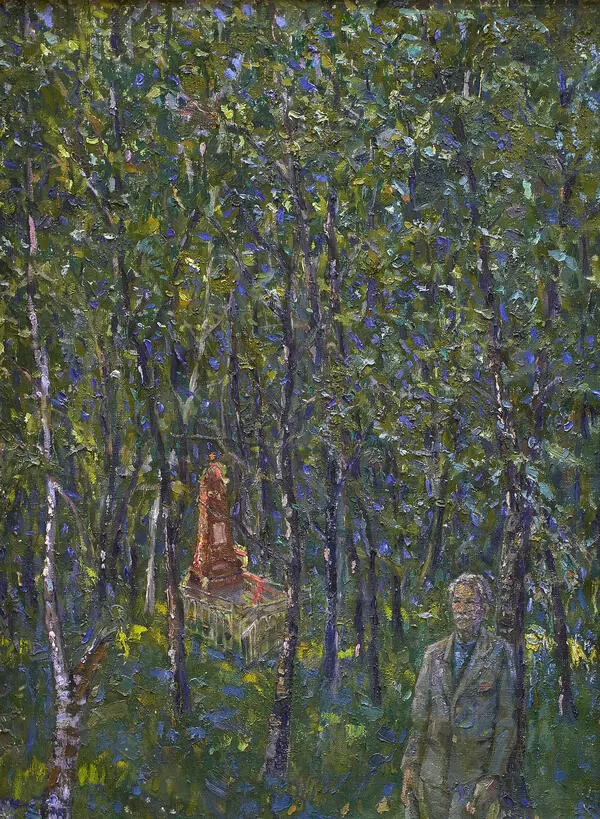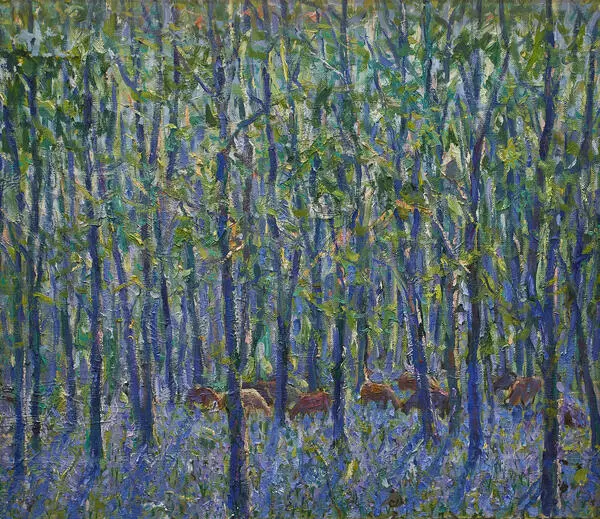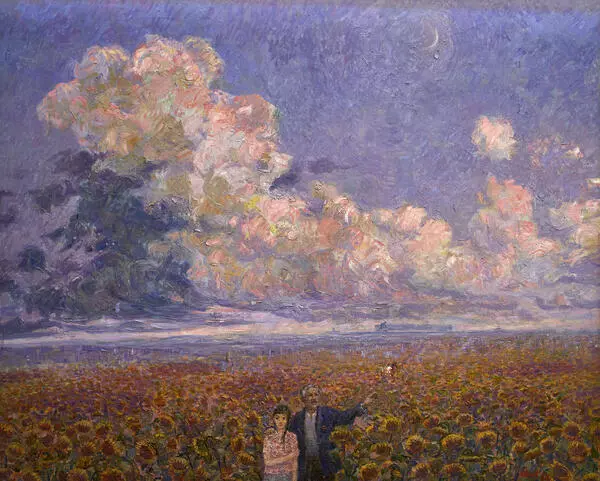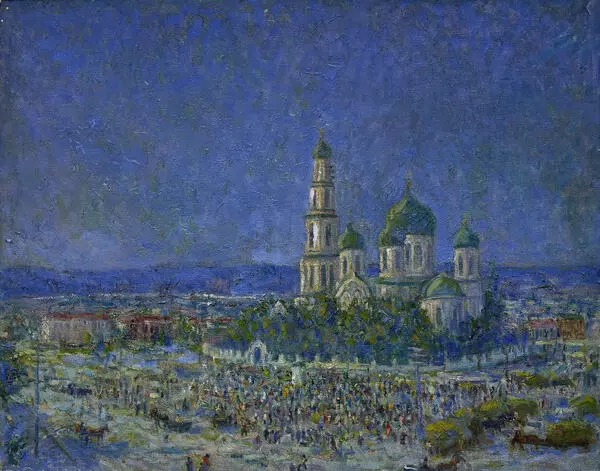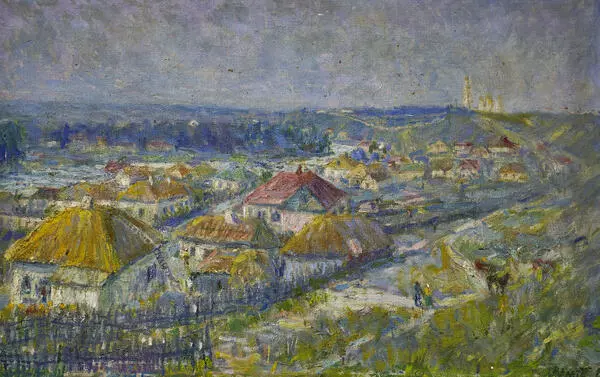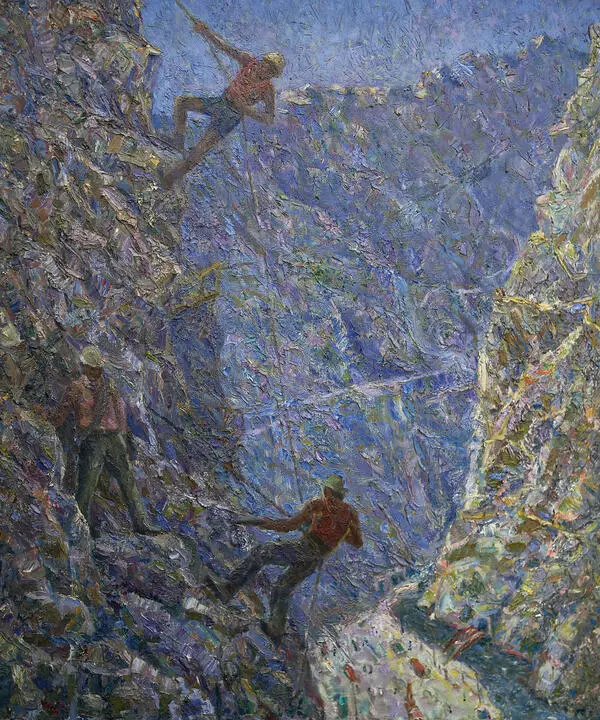The ‘Fishermen’ painting, displayed at the Valuy Museum of History and Art, was painted by the People’s Artist of Kyrgyzstan Alexander Ignatiev. His paintings can be seen in 14 museums in Russia and former Soviet republics.
He was born in the town of Valuyki, Belgorod region. As a child, he liked to walk along his hometown places and ancient monuments and make sketches of what he saw. But most of all, the amateur artist loved to depict nature.
In 1924, Ignatiev graduated from the Valuy school and got a job as an artist at the local theater — first drama theatre and musical comedy. Later, he entered the Voronezh Art and Pedagogical Technical School.
In 1934, the Union of Artists of Kyrgyzstan was established, and Alexander Ignatiev was appointed Deputy Chairman of this society. He organized events for the development of the artistic life of the Republic together with Russian masters of painting Semen Chuikov, Vladimir Obraztsov, as well as the first national representatives of the Fine Arts of Kyrgyzstan being established in the 1930s, Gapar Aitiev and Sabyrbek Akylbekov. Also, Ignatiev developed the fundamental principles of realistic art and its connection with folklife. For a series of paintings dedicated to the All-Union Toktogul Construction, Ignatiev was awarded the State Prize of the Kyrgyz SSR named after Toktogul. During his creative activity, he wrote more than 100 works that are kept in museums in Komsomolsk-on-Amur, Kemerovo, Moscow, Lvov, Tashkent, St. Petersburg, Stary Oskol, Belgorod. One of his paintings is held in the State Tretyakov Gallery.
Artist Alexander Ignatiev made an outstanding contribution to the development of national Fine Art. On his initiative, Alexander Ignatiev organized the national Museum of Fine Arts in his home town of Valuyki, which is known as the Valuy Museum of History and Art.
Every year Alexander Ignatiev returned to the town of his childhood, Valuyki. Thoughts and feelings caused him to stay in his father’s land. The painter then reflected such thoughts and feelings on his various sketches and paintings.
In “Fishermen. 1914,” Ignatiev depicted one of the oldest neighborhood units of the town on the Valuy river banks. He painted a canvas based on archival photographs of the early twentieth century. In this work, the artist conveyed his impressions and thoughts being a child on the theme of the Russian people’s historical past.
He was born in the town of Valuyki, Belgorod region. As a child, he liked to walk along his hometown places and ancient monuments and make sketches of what he saw. But most of all, the amateur artist loved to depict nature.
In 1924, Ignatiev graduated from the Valuy school and got a job as an artist at the local theater — first drama theatre and musical comedy. Later, he entered the Voronezh Art and Pedagogical Technical School.
After technical school, Ignatiev was sent to the city of Frunze on the call of the People’s Commissariat of the Kyrgyz SSR. The amateur artist began to participate in the construction of a new socialist culture of the Republic.
In 1934, the Union of Artists of Kyrgyzstan was established, and Alexander Ignatiev was appointed Deputy Chairman of this society. He organized events for the development of the artistic life of the Republic together with Russian masters of painting Semen Chuikov, Vladimir Obraztsov, as well as the first national representatives of the Fine Arts of Kyrgyzstan being established in the 1930s, Gapar Aitiev and Sabyrbek Akylbekov. Also, Ignatiev developed the fundamental principles of realistic art and its connection with folklife. For a series of paintings dedicated to the All-Union Toktogul Construction, Ignatiev was awarded the State Prize of the Kyrgyz SSR named after Toktogul. During his creative activity, he wrote more than 100 works that are kept in museums in Komsomolsk-on-Amur, Kemerovo, Moscow, Lvov, Tashkent, St. Petersburg, Stary Oskol, Belgorod. One of his paintings is held in the State Tretyakov Gallery.
Artist Alexander Ignatiev made an outstanding contribution to the development of national Fine Art. On his initiative, Alexander Ignatiev organized the national Museum of Fine Arts in his home town of Valuyki, which is known as the Valuy Museum of History and Art.
Every year Alexander Ignatiev returned to the town of his childhood, Valuyki. Thoughts and feelings caused him to stay in his father’s land. The painter then reflected such thoughts and feelings on his various sketches and paintings.
In “Fishermen. 1914,” Ignatiev depicted one of the oldest neighborhood units of the town on the Valuy river banks. He painted a canvas based on archival photographs of the early twentieth century. In this work, the artist conveyed his impressions and thoughts being a child on the theme of the Russian people’s historical past.

